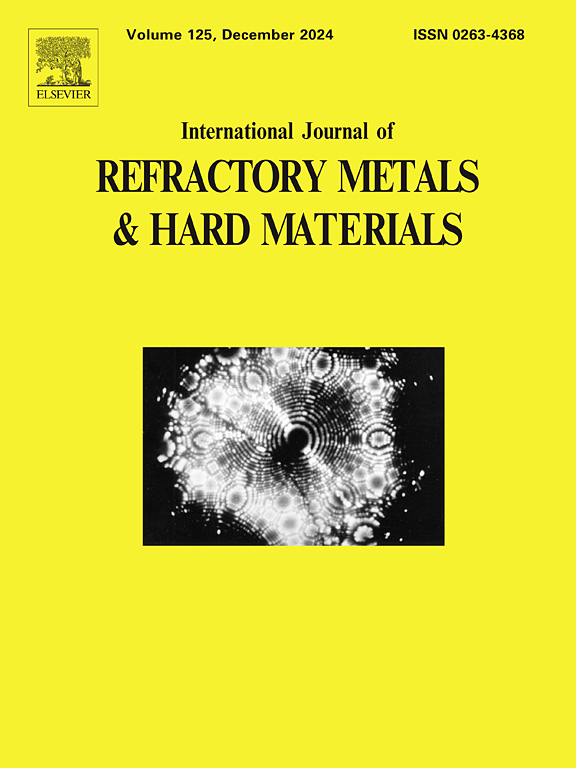Optimizing and understanding dry-electropolishing process on WC-Co cemented carbide material
IF 4.2
2区 材料科学
Q2 MATERIALS SCIENCE, MULTIDISCIPLINARY
International Journal of Refractory Metals & Hard Materials
Pub Date : 2024-12-03
DOI:10.1016/j.ijrmhm.2024.106997
引用次数: 0
Abstract
Dry-electropolishing (DEP) combines an electrochemical process with soft-mechanical abrasion by using porous ion-exchange particles (also known as dry-electrolyte). In recent years, it has been satisfactorily implemented for reducing surfaces defects, decreasing roughness, and obtaining smooth surface finish in several metallic and ceramic-metal composites. However, it requires a preliminary adjustment of DEP parameters in order to increase the polishing efficiency and avoid pitting or general corrosion issues. Moreover, there is a lack of information concerning the precise material removal mechanisms, this being particularly true for multiphase materials. In that sense, the main objectives of this study are to optimize the electrical parameters as well as to understand the main microstructural and chemical changes behind the DEP process on WC-Co. It is done by implementing several advanced characterization techniques: scanning electron microscopy, X-ray photoelectron spectroscopy and energy-dispersive X-ray spectroscopy. The results demonstrate that optimal electrical parameters in terms of planarity between constitutive phases, average roughness reduction and leaching-free microstructure can be achieved when utilizing a pulse/pulse reverse waveform in comparison to direct current or pulsed current. Optimization using a matrix of electrical parameters is proven to be a useful tool to focus on the results, these being when voltage and time of negative pulse applied higher values than the positive ones. Additionally, it is shown that the chemical compounds generated on the WC-Co surface are meanly Co3O4, Co(OH)2 and WO3. Material removal combines electrochemical process and also soft-mechanical actions, where particles contact oxides generated on the treated surface. The removed material mainly consists of W oxide, as Co passivates and has a low oxidation rate combined with its low content. To sum up, the corresponding analysis allows to get a deeper understanding of DEP along the roughness removal process as well as to give guidelines for optimizing its operative parameters for its application in multiphase ceramic/metal materials.
求助全文
约1分钟内获得全文
求助全文
来源期刊
CiteScore
7.00
自引率
13.90%
发文量
236
审稿时长
35 days
期刊介绍:
The International Journal of Refractory Metals and Hard Materials (IJRMHM) publishes original research articles concerned with all aspects of refractory metals and hard materials. Refractory metals are defined as metals with melting points higher than 1800 °C. These are tungsten, molybdenum, chromium, tantalum, niobium, hafnium, and rhenium, as well as many compounds and alloys based thereupon. Hard materials that are included in the scope of this journal are defined as materials with hardness values higher than 1000 kg/mm2, primarily intended for applications as manufacturing tools or wear resistant components in mechanical systems. Thus they encompass carbides, nitrides and borides of metals, and related compounds. A special focus of this journal is put on the family of hardmetals, which is also known as cemented tungsten carbide, and cermets which are based on titanium carbide and carbonitrides with or without a metal binder. Ceramics and superhard materials including diamond and cubic boron nitride may also be accepted provided the subject material is presented as hard materials as defined above.

 求助内容:
求助内容: 应助结果提醒方式:
应助结果提醒方式:


